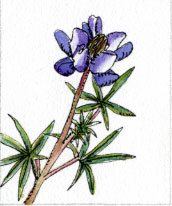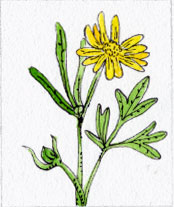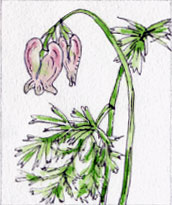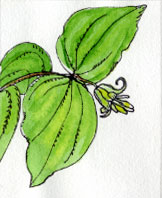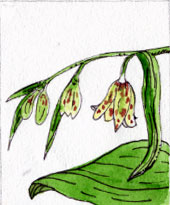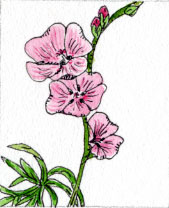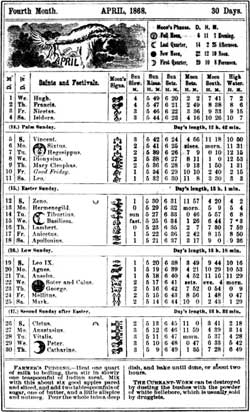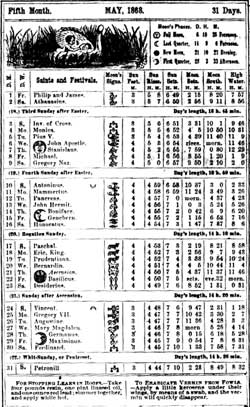Muir Biography
from birth till his arrival in California:
John Muir was born in Scotland in 1838. His family immigrated to America in 1849, when he was 11. They settled near Portage, Wisconsin and cleared land to build a farm. His father, Daniel, a Calvinist associated with the Disciples of Christ, seems to have been a bit of a religious fanatic: he made the family work in the fields while he stayed indoors to study the Bible. Muir found a love for the nature around him in rural Wisconsin. He proved to be an able inventor, creating machines composed of whittled cogs and levers for practical applications such as a bed connected to a clock that would tip him on the floor when it was time to wake up.
Muir was given no formal schooling after he moved to America, but he read and studied voraciously. When he was 22 he left home to display his inventions at the State Fair in Madison. These inventions were well received and he gained the mentorship of several people, including Mrs. Jeanne Carr, who helped to secure a place for him at the University of Wisconsin. He proved a likeable fellow, but a bit rustic and quite ascetic compared to his fellow classmates. He began to study the natural sciences intending to study medicine and become a physician to help to his fellow man. He created more mechanical inventions, including a studying machine with a rotating table that opened different books at different times. Through the influence of Mrs. Carr, Muir began to study botany.
The civil war and work interrupted his studies. In 1863 he returned to Portage, to help his sister and her husband build their house. Then, instead of returning to school on a student deferment, he attend the "University of the Wilderness" and wandered along the Wisconsin and Mississippi rivers and then, perhaps to avoid the draft, up into Canada. These were the first of the many long "rambles" he would take throughout his life. He wandered here and there, studying the plant life and geographical features. On this trip he found a rare "Hider of the North" (Calypso borealis) in the midst of a dense stand of tamarack and seems to have had a sort of spiritual awakening.
In Canada, Muir put his mechanical skills to work creating machinery, and producing broom handles and rakes, at a manufacturing factory in Trout Hollow, Ontario.
In February of 1866 the factory caught fire and all of his work was destroyed. He decided to resume his rambles, but by May, Muir had again taken a job, this time in Indianapolis, where he put his mechanical genius to work at a carriage factory designing more efficient methods of production. In March of 1867 he had a serious accident: an awl pierced his right eye and both eyes went blind. Not sure if he would ever see again, Muir decided that if he did recover his sight, he would not return to work in industry, but rather would travel the world to see God's beautiful creation. Muir lay in bed for several months and during this time friends read to him for entertainment. It is presumed that this is when he heard of Yosemite and when the seed was planted for his life work.
He did recover his sight, and in September of 1867 set out on a thousand-mile walk from Indianapolis to the Gulf of Mexico. "My plan was" he wrote in his Journal (which was inscribed: John Muir, Earth-planet, Universe), " simply to push on in a general southward direction by the wildest, leafiest, and least trodden way I could find, promising the greatest extent of virgin forest. He spent little or no money on this trip and carried only his plant press, an India rubber bag with a change underclothes, a "New Testament" and Robert Burns's "Poems". He wrote of this trip, "I [often] had to sleep out without blankets, and also without supper or breakfast. But usually I had no great difficulty in finding a loaf of bread in the widely scattered clearings of the farmers. With one of these big backwoods loaves I was able to wander many a long, wild mile, free as the winds in the glorious forests and bogs, gathering plants and feeding on God's abounding, inexhaustible spiritual beauty bread."
He arrived at the Gulf by the end of the year, but contracted malaria in Florida and almost died. Though Muir had previously intended to travel on to South America from the Gulf, because of the malaria, at this point changed his plans and decided to instead go to California to see the Yosemite Valley and the giant sequoias. After a short trip to Cuba, Muir sailed to New York where he could catch a steamer, via Panama, for California. (This would have been March 5 according to Muir's March 3 letter to his brother David, where he states " I start for California weeds and trees next Thursday" but in "Life and Letters" Bade gives the departure date as March 6.) The trip took 43 days and according to newspaper accounts, his ship arrived in San Francisco the evening of March 27, 1868.
